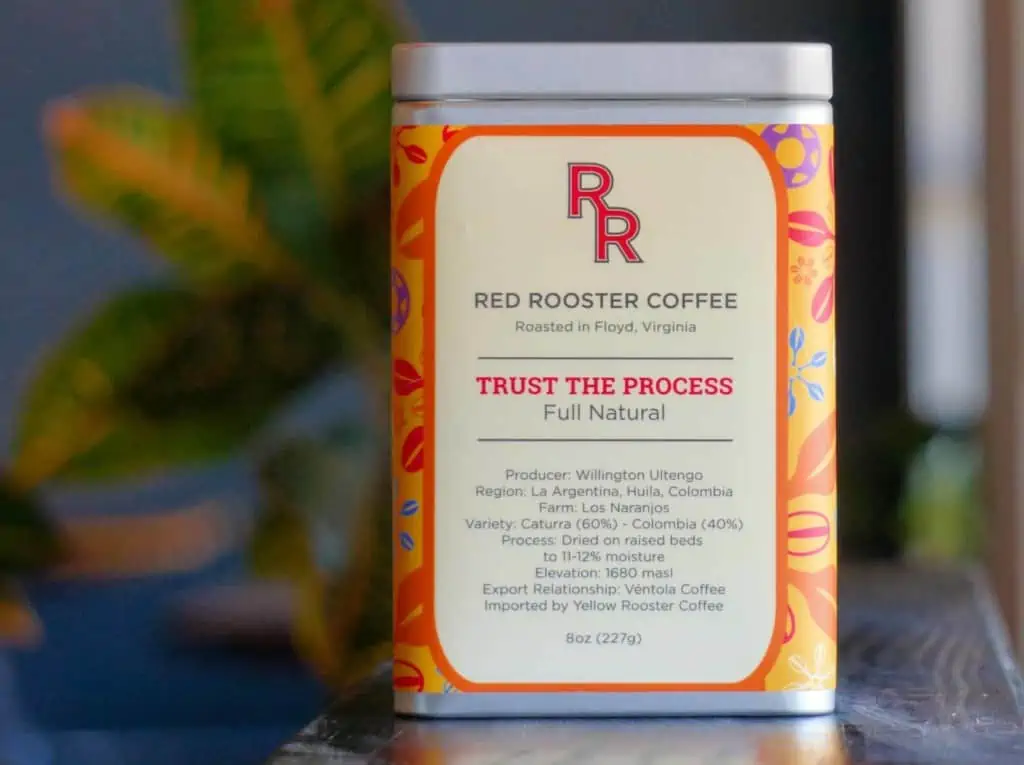
Red Rooster’s “Trust The Process” Colombia coffee was the top-rated coffee in this month’s report. Photo courtesy of Red Rooster Coffee Roaster.
Colombia could be approaching best-of-both-worlds status as coffee producer. On one hand, standard commodity Colombias continue rolling down to the ports and onward into “100% Colombian” supermarket cans and jars, whose quite decent contents put to shame the bland, woody, Robusta-laden contents of competing supermarket cans and jars.
At the same time, small lots of specialty Colombia coffees, surprising and exceptional, have surfaced over the last decade or so. Until recently, these specialty Colombias aimed for a superior version of the classic power and completeness associated with the best traditional Colombia coffees. In other words, they aspired to transcend the standard-issue Colombia cup by doing the same thing, only better.
But recently, increasing numbers of Colombias have appeared on specialty lists that represent the opposite of classic. These are often anything-goes, push-it-to-the-limit experiments with processing method of the kind that have erupted at the trendy high end of the coffee market over the past couple of years. In particular, they include sweetly fruit-toned coffees dried in the whole fruit (naturals), as well as coffees processed by a range of hybrid methods, including variations on the latest processing fad, anaerobic fermentation.
From a consumer point of view, the best of both worlds could be starting to look like a split coffee personality.
63 Single-Farm Colombias
We tested 63 single-farm Colombias for this month’s report. Close to half (45%) were conventionally washed or wet-processed in the Colombia tradition. About 30% were dried-in-the-fruit or natural-processed (in other words, not in the Colombia tradition). And almost 25% were subject to ingenious hybrid variations on anaerobic processing or carbonic maceration, definitely not in the Colombia tradition. Anaerobic, by the way, means that at some point during the process of fruit removal and drying the coffees are subject to fermentation in restricted oxygen conditions (sealed tanks, sealed bags, tanks filled with CO2). When the oxygen restriction is performed by sealing the coffee fruit in tanks filled with CO2 the process may be termed carbonic maceration, with maceration in this case used as a rough synonym for fermentation and carbonic referring to the CO2. All such deprivation of oxygen during fermentation aims to reduce the action of oxygen-loving yeasts that produce sweet alcohol fermentation while promoting the action of lactic-acid-producing bacteria that don’t need oxygen. These last are the sorts of bacteria that influence the taste of yogurt, kefir, sour beers and kimchee, among other foods and beverages.
Based on my own experience tasting these experiments, the best of them seem to combine cup characteristics I associate with the lush impact of yeast/alcohol fermentation as well as the tangy tart-sweetness of lactic fermentation. But either way, these hybrid anaerobic-ferment coffees offer the almost exact opposite of what we expect from standard washed-process coffees in the Colombia tradition: They propose the unexpected rather than the expected, the surprising rather than the predictably suave and balanced.
No Matter What the Process, Considerable Success
Regardless of processing variation, the 63 Colombia single-farm samples we tested for this month’s report were overall impressive. More than half scored 90 or higher, and a notable 17 scored 93 or better. Of those seventeen 93+ samples, we chose 12 to review this month.
Surprisingly, perhaps, these 12 report-topping coffees were split among processing methods almost precisely in the same percentages as the samples were for the cupping as a whole. Almost half (42%) were washed process, 25% were natural-processed, and 25% were variations on anaerobic methods. There was one honey-processed coffee, accounting for the 8% needed to reach 100%.
So, if there is any lesson to be learned here concerning processing method and high ratings at Coffee Review, it would seem to be that it’s not the processing method that attracts high ratings, but rather the care and knowledge the producer brings to executing those processing methods. Supported, of course, by importers, roasters and consumers willing to pay enough to justify that care and knowledge.
Scan the Ratings, but Read the Reviews
Another lesson is that consumers using Coffee Review to help with their buying decisions might want to purchase coffees based on reading the reviews as well as looking at the ratings.
Take the top three coffees in the report, all rated 95 or 96. One was a natural-processed coffee, the Red Rooster “Trust the Process” (96), one a conventional fully washed coffee, the Paradise Finca El Caucho (95), and one a hybrid anaerobic, the Kakalove Cafe Colombia 95). Not only the processing methods, but the particular coffee pleasures offered by these three exceptional coffees, are quite different. Of course, one could also argue that by buying any of them, the coffee lover wins, just in different ways.
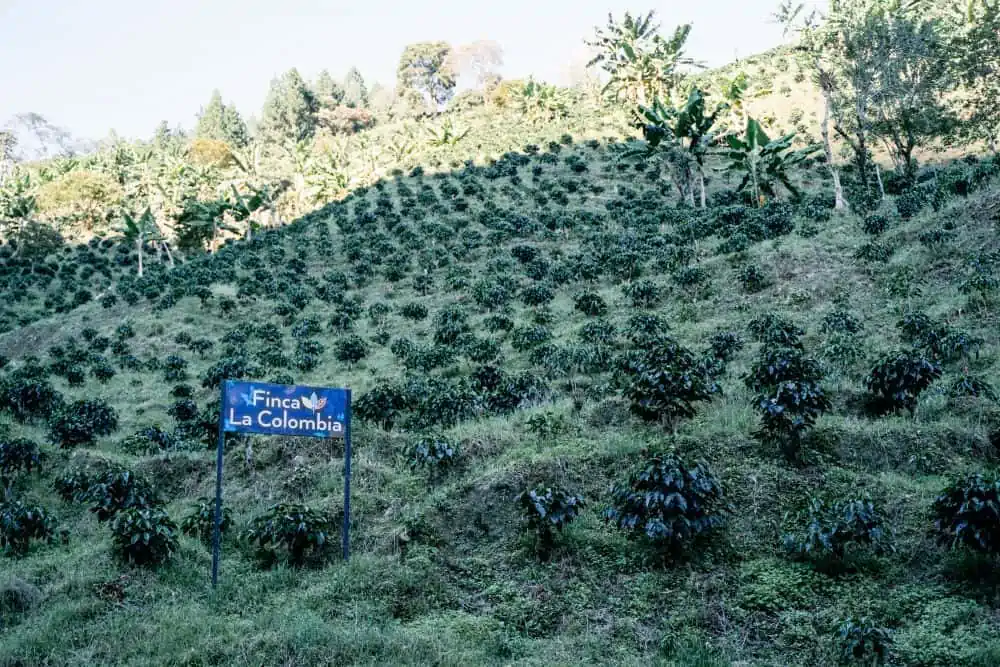
Kakalove Cafe’s Natural Carbonic Maceration coffee, which earned 95 points, was grown at Finca La Colombia in Antioquia. Photo Courtesy of Kakalove Cafe.
Juan Valdez Contemplates Carbonic Maceration
With almost any other origin except Colombia, such a schitzy split in processing method and coffee personality might go unnoticed. But for the last 60 years, Colombia has been successfully selling the world on a uniform, relatively consistent coffee experience branded “100% Colombian.” The National Federation of Coffee Growers of Colombia (FNC)’s decades-long, innovative marketing program built around that name and featuring the photogenic farmer Juan Valdez (played by a succession of actual coffee farmers over the years) remains a remarkable, award-winning success story in establishing brand recognition with North American consumers. At one point in the early 2000s, around 12.5% of all coffee sold in the U.S. was Colombian.
Meanwhile, at the producing end, the FNC relentlessly pursued its goal of turning all of its grower members into one unified coffee expression, as near as possible offering the same “100% Colombian” cup no matter where in Colombia the green coffee came from or which of its 513,000 farmer-members grew it.
Keep It Washed
So committed was Colombia to achieving a consistent nationwide coffee profile that, for decades, Colombian authorities only allowed coffees to be exported that pretty much fit the “100% Colombian” model: standard clean-profiled, wet-processed coffees that fulfilled certain grading expectations. The goal was to prevent lower-quality or off-tasting coffees from reaching the market and sullying the 100% Colombia brand. But these rules also discouraged export of quality coffees processed using alternative processing methods.
In 2015, Colombia authorities finally relaxed those regulations. The main driver apparently was a need to export somewhat lower-quality coffees to meet demand during a time when the rust epidemic and other factors severely reduced overall Colombia coffee production. But surely, an additional motivation must have been the desire of some producers and their importer and roaster allies to see Colombia join the growing movement to create new and exciting cup profiles through experimentation with processing.
At any rate, the change in Colombian export regulations five years ago opened the door to the rather striking contrast among this month’s 12 reviewed coffees, a contrast between what we might call the Similar-But-Better approach and the Different-But-Exciting approach to specialty differentiation.
The Similar-But-Better Successes
The top-rated among this month’s Similar-But-Better collection is the 95-point Paradise Colombia Finca El Caucho Pink Bourbon, with its natural sweetness, high-toned brightness, and intricate floral, honey and citrus notes. True, although its lovely honey-sweet yet citrusy structure may have been encouraged by a classic washed process, its juicy complexity probably can be attributed to a tree variety that local Colombian growers in the Huila region call Pink Bourbon.
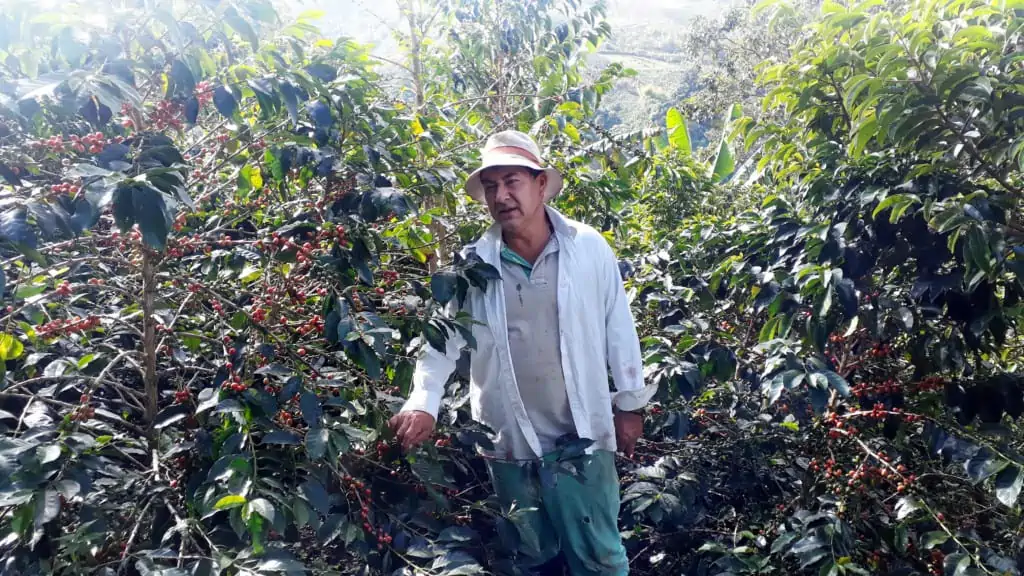
Roberto Achicue of Finca El Caucho grew the Paradise Roasters Pink Bourbon we rated at 95 points. Photo courtesy of Paradise Roasters.
In terms of fact and science, there appear to be more questions than answers about Pink Bourbon and its origins and genetics. Both red-fruited and yellow-fruited Bourbons are widely grown in the coffee world, and local Colombian producers have made the logical assumption that their Pink Bourbon is a spontaneous cross between Red and Yellow. However, genetic fingerprinting suggests that the Huila version is more likely a variety not directly related to Bourbon. Nevertheless, one thing seems clear: Pink Bourbon as grown in the Huila region of Colombia can produce an impressive cup.
Regrettably, the 95-point Paradise Finca El Caucho Pink Bourbon is already sold out on the roaster’s website, but I think readers will not be stepping very far back with either the 93-rated Badbeard’s Special Project Colombia Pink Bourbon or the 93-rated JBC Aces La Juntas, also from trees of the Pink Bourbon. Both are washed process, and both are sweetly and gently tart and juicy in structure with a citrusy edge. The Badbeard version is more floral and the JBC more chocolaty and nut-toned. I confess that I brought the leftover Badbeard’s home and drank it with the greatest pleasure over two days running.
Two more 93-rated washed-process Colombias fill out this month’s Similar-But-Better contingent: the Greater Goods Bright Minds and the modcup Colombia Finca Potosi. Both are produced from a selection of standard Colombia varieties: Caturra, Colombia, Castillo. But both display considerable distinction, presumably owing to meticulous work at the farm and mill: spice and flower notes with a fine dry chocolate in the case of the Bright Minds; sweet lilac-like flowers and orangy citrus and caramel with the modcup Finca Potosi.
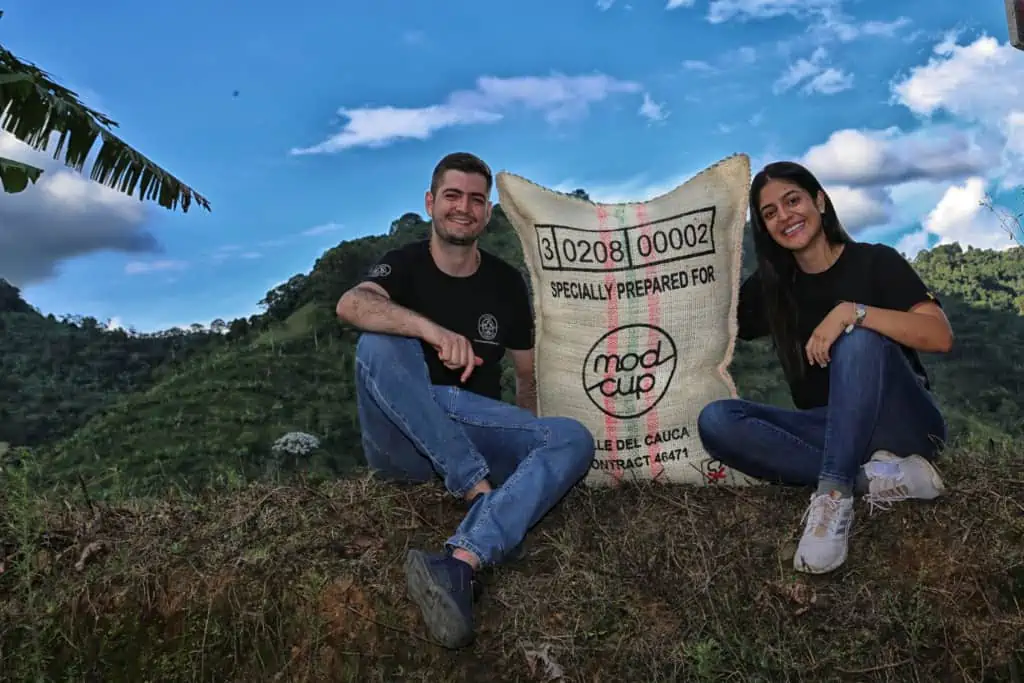
Finca Potosi, in Colombia’s Valle de Cauca, grew a special lot for modcup coffee, which earned 93 points. Photo courtesy of modcup coffee.
Three Impressive Naturals
It was only about 15 years ago that producers in Ethiopia and Central America began to seriously experiment with natural processing fine coffee. Until then, drying coffee in the whole fruit was a practice associated almost exclusively with poor-quality, mass-produced coffees. Peripheral fermentation during drying in the whole fruit tends to impart taste characteristics to the cup that can range from unpleasantly rotten, through seductively brandy-like, to gloriously sweet and complex. Specialty coffee producers all over the world are now learning how to control drying to produce coffees in the positive range of that spectrum, and based on this month’s samples, some Colombia producers are now well into that game.
This month’s top-rated coffee, the 96-point Red Rooster “Trust the Process” Full Natural appears to be a triumph of well-managed natural processing, given that the tree varieties that were subject to that processing are the usually plain-tasting, straightforward Caturra and Colombia. The Red Rooster natural is deeply resonant with sustained, shifting complexity, supported by a structure that reviewer Kim Westerman calls “lyrically sweet, mysteriously savory, invitingly tart.”
Like the Red Rooster, this month’s other two top-rated naturals, the Blues Brew Finca La Maria Geisha Natural (94) and the Plat Colombia Diofanor Ruiz (94) are what we might call clean naturals (or maybe sober naturals). Neither display much alcohol-related nuance, though both are quite distinctive in their processing-driven expression. The Blues Brew is deeply chocolaty, sweet-savory and pungent. The Plat is higher-toned, fruit-forward but tangy and tart, with some pleasant yogurty dairy suggestions.
The Latest Wrinkle: Anaerobic Fermented Naturals
With this month’s three samples involving variations on anaerobic ferment or carbonic maceration, we travel farthest from the classic Colombia cup. Nevertheless, these three coffees are not extreme examples of the anaerobic style. All seem to retain the familiar lushly sweet tendencies of yeast fermentation combined with only moderate influence of the tangy bacterial ferment associated with anaerobic or carbonic methods.
All three basically build on the natural method. The 95-rated Kakalove Colombia Antioquia Natural Carbonic Maceration Caturra was essentially kept in the whole fruit during extensive fermentation in sealed tanks injected with CO2 and afterwards dried in the whole fruit. The result is a jammy, sweet, chocolaty cup with intricate flavor nuance and savory depth: dessert-like but complex. The 94-rated Brioso Colombia Java El Edén is also essentially a natural coffee fermented in low-oxygen conditions and dried in the whole fruit, netting a profile both sweetly lush and tangily lactic, not to mention intricate and original in aromatics. The 93-rated Dory Colombia Finca El Paraiso reveals the most explicit anaerobic influence. It also was subject to the most complex procedure: first 24 hours in the whole fruit in sealed tanks, then pulped or skinned and put back in the tanks for another 36 hours of anaerobic/limited oxygen ferment. It is, frankly, a not-for-everyone success: savory-sweet and complexly herby and chocolaty — think sweet chocolate sauce with ginger and herbs.
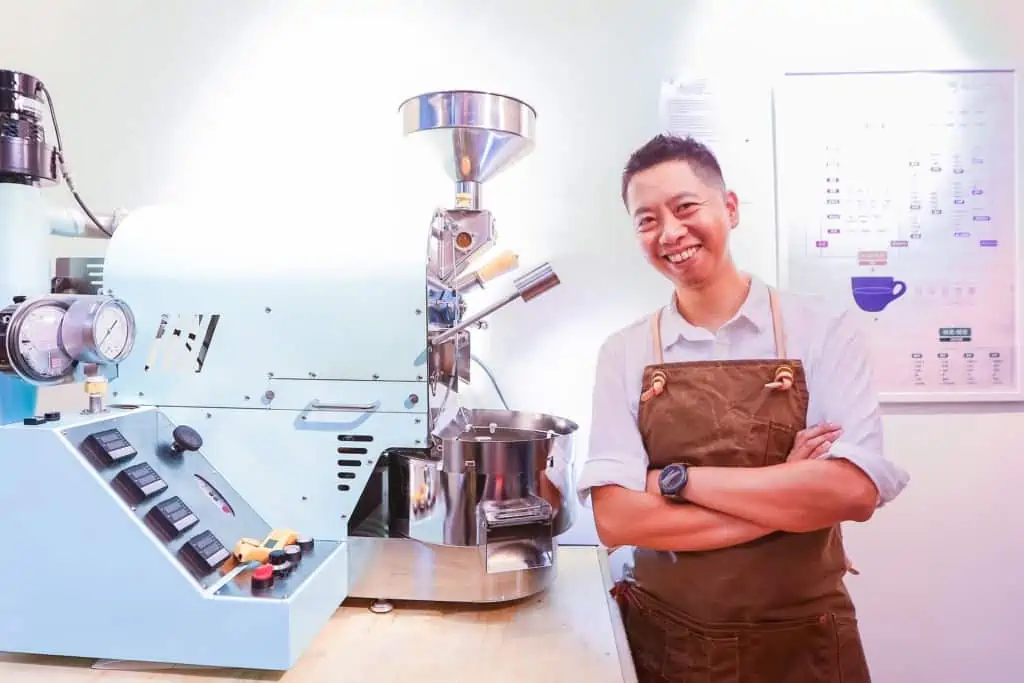
Jason Yu of Dory Coffee Roasters, based in Taipei, Tawian, whose double-anaerobic coffee scored 93 points. Photo courtesy of Jason Yu.
And a Honey with Variations
It’s good to conclude with a classic cup, albeit one generated through still more processing experiment. Evie’s Café La Gallera Estate (94) is technically a honey-processed coffee, since it was dried encased in the fruit flesh after being pulped. But along the way to the drying tables, it was fermented twice, albeit briefly, once in the whole fruit and again after pulping. Apparently, however, neither of these ferment episodes involved limited oxygen or other anaerobic hijinks. You might call the Evie Café’s honey a discreet experiment producing a discreetly fine coffee, balanced but complete: softly bright with notes of raspberry, chocolate, flowers, nut.
A Quick Return to the Big Picture
Coming back to the best of both worlds theme I opened with, the Colombia coffee authorities have managed to turn the corner on the ravages of climate change and the great rust disease pandemic starting in 2009. Mainly driven by a successful program of planting disease-resistant coffee varieties, total Colombia coffee exports have climbed steadily over the past several years.
In the big picture, we have to hope that the 100% Colombia program will continue to roll on successfully, supported by higher and fairer prices for this sturdy, dependable, essential coffee type. The 100% Colombia program still provides North American consumers with the only solid budget coffee experience available in supermarket cans and instants while providing an essential livelihood for Colombia’s hundreds of thousands of smallholding producers.
Luis Samper, distinguished coffee writer, researcher and proponent of the Colombia industry, points out that the sorts of microlot coffees produced by processing innovations like those described here (natural, anaerobic, honey) remain the tiniest drop in the bucket in the big economic picture for Colombia coffee. Estimates he has seen puts exports of such alternative-processed Colombia coffees at around 15,000 70-kilo bags per year. Colombia’s total exports in 2020 came to around 10.7 million 70-kilo bags of Arabica coffee of various qualities.
But for Coffee Review and its readers, and hopefully for the producers passionately engaged in refining traditional processes or diving headlong into new alternatives, this tiny drop of specialty Colombias is a glistening jewel deep with creative possibility and daily pleasure.
Coffee Review would like to thank guest cupper Lily Logan, Operations Manager at Bay Area CoRoasters (CoRo), who made valuable contributions to this month’s reviews.










